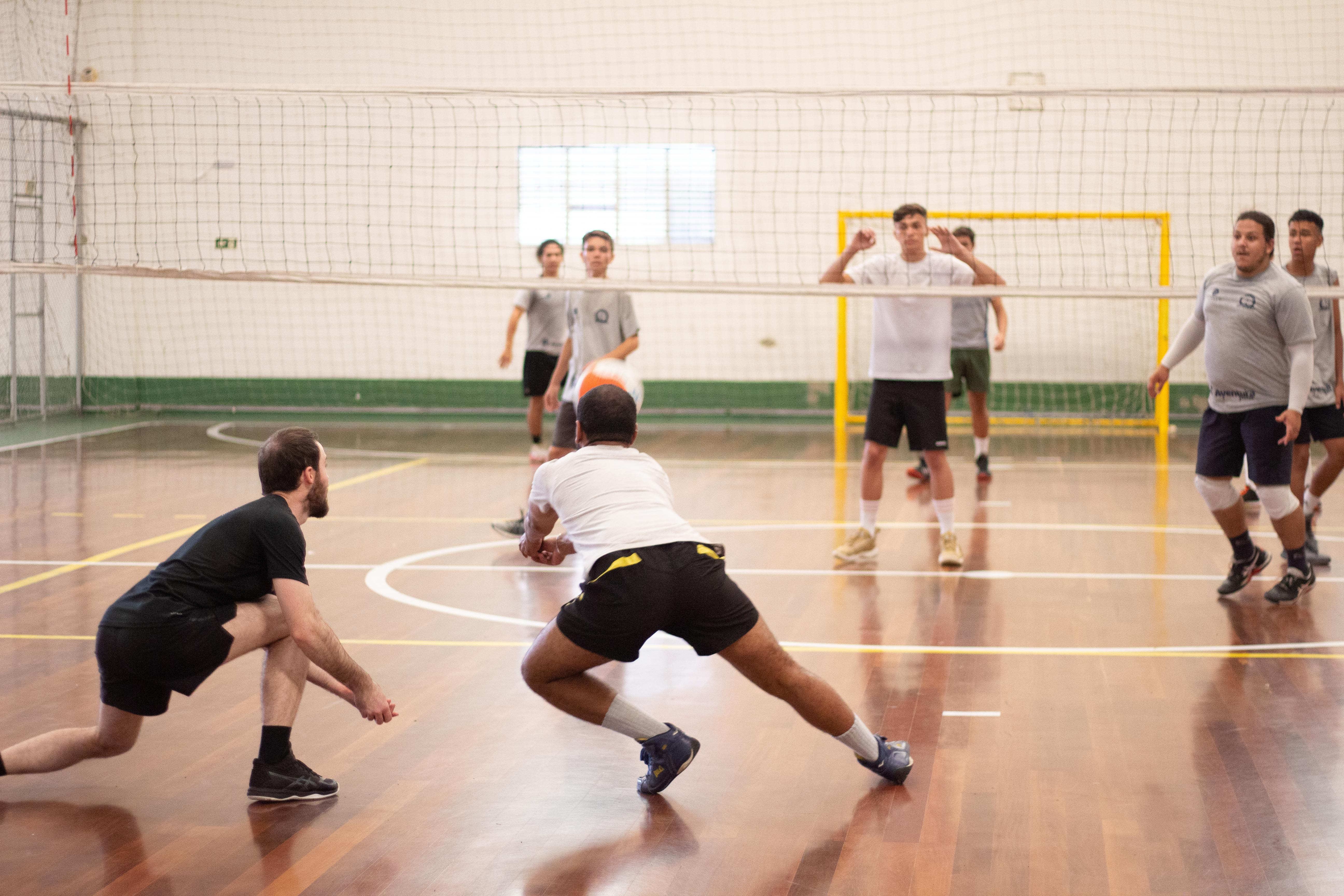Volleyball Injuries: Ankle Sprain

Volleyball is one of the fastest growing sports in America, partly because of the increased popularity with outdoor variations. With this, kids are trying to play more, which can increase the chances of injuries occurring. The most common injury complaint in volleyball players is ankle sprain (https://www.ncbi.nlm.nih.gov/pubmed/9257411), closely followed by shoulder complaints. Both of these make sense due to the amount of jumping that occurs near the net and the repetitive nature of attacking and serving in practice and matches. Two of the other common volleyball related injuries we see and treat in our clinic are knee pain and lower back pain.
In this blog series, I am going to go into more detail about each injury and provide some rationale behind the exercises and what we are trying to accomplish with each one. We will begin by discussing ankle sprain rehab.
Is RICE Still Best?
The first point to discuss is the use of the RICE method for ankle sprain injuries (and many soft tissue injuries). RICE stands for Rest, Ice, Compression, Elevation. This was a method produced by Dr. Gabe Mirkin in 1978 and it was generally accepted and used for years. Well, over the years, a lot of research on this protocol has been done and the effectiveness of the RICE method has been challenged. Dr. Mirkin has said “Coaches have used my “RICE” guideline for decades, but now it appears that both Ice and complete Rest may delay healing, instead of helping.”(https://www.drmirkin.com/fitness/why-ice-delays-recovery.html). The general summary of why this method doesn’t speed up recovery is because it slows down the body’s normal response to the injury. Inflammation, swelling, and restricted range of motion is your body’s natural response to protect the injury and begin the healing process.
So, let’s dive into more detail about each component of the RICE method. First is rest. Rest should only be done if significant damage is done. This might mean a bone is broken or ligaments are torn, which might result in surgical intervention or immobilizing the injury. Other than these few situations, resting the injury generally isn’t recommended. Second is ice. Ice only provides temporary pain relief. There isn’t evidence to support its efficacy to reduce swelling and speed up the healing process, so ice is not something we recommend. Third is compression. Compression might help to keep the joint warm and have a protective psychological effect, so if it makes you feel optimistic about your ankle, it has a place. Fourth is elevation. The idea behind elevating an injured and swollen ankle/foot is to make it harder for the heart to pump blood into the injury, thus reducing the swelling. This makes logical sense, but again, do we want to reduce the swelling if it is being brought to the area to heal the sprain? I think elevating an ankle sprain can be beneficial to perform movements in an unloaded (not weight-bearing) position, which is probably necessary to start implementing movement back into the joint without pain.
Ankle Sprain Rehab
In the video, we demonstrate a progression of exercises to get the player back on the court as fast as possible. The progression is dependent on a few things: the severity of the ankle sprain, the player’s willingness to perform the exercises, and the player’s ability to listen to their body’s response to the exercises.
We usually recommend to begin performing an exercise like ankle ABC’s because it can be done unloaded and the range of motion can be small enough that it isn’t painful. In the first few days following an ankle sprain, we want to reduce increasing pain levels, as this could potentially lead to more damage occurring and a longer healing process.
After ankle ABC’s become too easy, performing banded ankle inversion, eversion, and even dorsiflexion are great ways to regain some strength in muscles that affect the ankle joint. Again, this exercise is done unloaded, but building strength in these muscles are key to proper recovery.
Loading the Ankle Sprain
From here, we have to begin to improve balance. One of the skills that is commonly lost in an ankle injury is proprioception. The definition of proprioception is “perception or awareness of the position and movement of the body.” So, it’s important to regain the body’s ability to know where the ankle and foot are in space. Balance exercises are easy to perform at home, and you can progress them as needed. Balancing on a blanket, a pillow, and then while passing or setting are great ways to improve proprioception.
Finally, reintroduction of jumping on the injured foot/ankle is the final step to returning back to the court. If there is significant pain when the player jumps for the first time, they might not be ready for this step. This should be introduced with small, quick hops, eventually progressing to some higher single leg bounds. When the player can do this without pain, they should be ready to return to the court.
So, the next time you roll your ankle, rather than sitting on the sidelines for 3 weeks with a bag of ice wrapped around your foot, go through these exercise progressions to show your coach and teammates you are dedicated to getting back on the court!
This blog was written by Dr. Adam Cosson.
Resources:
https://www.ncbi.nlm.nih.gov/pubmed/9257411
https://www.dictionary.com/browse/proprioception
 262-373-9168
262-373-9168



